-
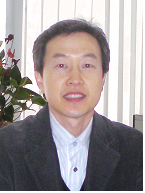 Super-Fast Internet Data Chip Developed
A KAIST research team led by Prof. Kyoung-Hoon Yang of the Electrical Engineering & Computer Science Department developed a super-fast chip that could lead to huge advancements in broadband Internet technology, the Korean Ministry of Education, Science and Technology said on Thursday (June 26).
The multiplexer chip is the first of its kind to be developed using the quantum effect of resonant tunnelling diode, according to the Ministry.
The integrated circuit chip built at the university laboratory has an operating speed of 45 gigabits per second (Gb/s), while using roughly 75 percent less energy than the previous version. The speed enables the transfer of about 4 full-length movies in one second.
The best operational broadband Internet services provide users with data transfer speed of 40 Gb/s, while most other high-speed online connections offer 10 Gb/s.
"Besides speed, the greatest achievement is low energy use," Prof. Yang said. He stressed that energy use in chips is a crucial factor because power creates heat that can melt circuits and make them inoperable.
"By cutting down on energy use, the new chips can be made smaller and with faster data transfer speed," the scientist said.
He added that efforts are underway to increase operational speed to 100 Gb/s, with energy consumption to be cut to 10 percent of current chips like the high electron mobility transistor, the heterojunction bipolar transistor and the complementary metal oxide semiconductor.
The researcher speculated that such revolutionary chips could be developed in 1-2 years and become the new benchmark in this field since existing chips have limited development capabilities.
The project has received funding from the Education-Science-Technology Ministry since 2000. The Ministry"s financial support will last until 2010.
2008.06.26 View 14985
Super-Fast Internet Data Chip Developed
A KAIST research team led by Prof. Kyoung-Hoon Yang of the Electrical Engineering & Computer Science Department developed a super-fast chip that could lead to huge advancements in broadband Internet technology, the Korean Ministry of Education, Science and Technology said on Thursday (June 26).
The multiplexer chip is the first of its kind to be developed using the quantum effect of resonant tunnelling diode, according to the Ministry.
The integrated circuit chip built at the university laboratory has an operating speed of 45 gigabits per second (Gb/s), while using roughly 75 percent less energy than the previous version. The speed enables the transfer of about 4 full-length movies in one second.
The best operational broadband Internet services provide users with data transfer speed of 40 Gb/s, while most other high-speed online connections offer 10 Gb/s.
"Besides speed, the greatest achievement is low energy use," Prof. Yang said. He stressed that energy use in chips is a crucial factor because power creates heat that can melt circuits and make them inoperable.
"By cutting down on energy use, the new chips can be made smaller and with faster data transfer speed," the scientist said.
He added that efforts are underway to increase operational speed to 100 Gb/s, with energy consumption to be cut to 10 percent of current chips like the high electron mobility transistor, the heterojunction bipolar transistor and the complementary metal oxide semiconductor.
The researcher speculated that such revolutionary chips could be developed in 1-2 years and become the new benchmark in this field since existing chips have limited development capabilities.
The project has received funding from the Education-Science-Technology Ministry since 2000. The Ministry"s financial support will last until 2010.
2008.06.26 View 14985 -
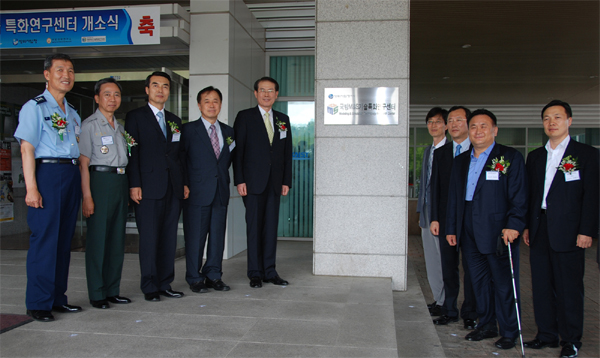 KAIST Opens M&S Technology Research Center
KAIST held an opening ceremony for a new defense research center focusing on modelling & simulation located at its main campus in Daejeon on Thursday (June 19).
The opening of the M&S Technology Research Center is aimed at developing technologies and processes to test, practice and operate newly-developed precision and micro weapons systems in virtual space. The center will be supported by two state-run defense agencies, the Defense Acquisition Program Administration and the Korean Agency for Defense Development.
The new research center is expected to receive a total of 11.5 billion won (US$11.2 million) research grants from the state for the next eight years until 2016. The center will be involved in the development of sophisticated, complex and inter-related weapons system and training research personnel in the specialized area.
The research center will undertake a total of 21 specific projects in collaboration with seven other universities in Korea. Also joining the projects are such overseas institutions as Georgia Institute of Technology and the U.S. Naval Post-Graduate School, and private defense solution providers including Posdata, Samsung Thales and LIG Nex 1.
The opening of the research center comes at a time when modelling and simulation gain growing importance as today"s armies employ more sophisticated, complex and inter-related. weapons systems and equipment than ever before.
Tae-Uk Lee, director of the research center said: "The opening of the center will spur development of operational technologies of precision and micro weapons system on our own, departing from dependence on advanced countries."
2008.06.19 View 19108
KAIST Opens M&S Technology Research Center
KAIST held an opening ceremony for a new defense research center focusing on modelling & simulation located at its main campus in Daejeon on Thursday (June 19).
The opening of the M&S Technology Research Center is aimed at developing technologies and processes to test, practice and operate newly-developed precision and micro weapons systems in virtual space. The center will be supported by two state-run defense agencies, the Defense Acquisition Program Administration and the Korean Agency for Defense Development.
The new research center is expected to receive a total of 11.5 billion won (US$11.2 million) research grants from the state for the next eight years until 2016. The center will be involved in the development of sophisticated, complex and inter-related weapons system and training research personnel in the specialized area.
The research center will undertake a total of 21 specific projects in collaboration with seven other universities in Korea. Also joining the projects are such overseas institutions as Georgia Institute of Technology and the U.S. Naval Post-Graduate School, and private defense solution providers including Posdata, Samsung Thales and LIG Nex 1.
The opening of the research center comes at a time when modelling and simulation gain growing importance as today"s armies employ more sophisticated, complex and inter-related. weapons systems and equipment than ever before.
Tae-Uk Lee, director of the research center said: "The opening of the center will spur development of operational technologies of precision and micro weapons system on our own, departing from dependence on advanced countries."
2008.06.19 View 19108 -
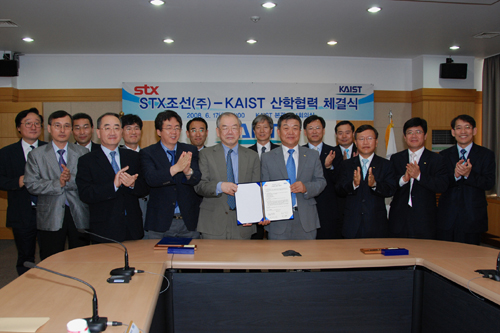 STX Shipbuilding Donates 500 Million won to KAIST
STX Shipbuilding Co, one of Korea"s leading shipbuilders, signed a memorandum of understanding with KAIST to donate 500 million won (about US$480,000) to Korea"s premier research university on Tuesday, June 17.
KAIST President Nam-Pyo Suh and STX Shipbuilding Vice Chairman In-Sung Lee signed the MOU in a ceremony at the KAIST attended by about 20 officials from the university and STX.
STX Shipbuilding donated the sum for the promotion of industrial-academia research projects at KAIST. It will be spent on supporting students" academic activities and scholarships, according to KAIST authorities.
At the signing ceremony, the two institutions also agreed to collaborate in the development of joint research projects and on-the-job training.
2008.06.18 View 13185
STX Shipbuilding Donates 500 Million won to KAIST
STX Shipbuilding Co, one of Korea"s leading shipbuilders, signed a memorandum of understanding with KAIST to donate 500 million won (about US$480,000) to Korea"s premier research university on Tuesday, June 17.
KAIST President Nam-Pyo Suh and STX Shipbuilding Vice Chairman In-Sung Lee signed the MOU in a ceremony at the KAIST attended by about 20 officials from the university and STX.
STX Shipbuilding donated the sum for the promotion of industrial-academia research projects at KAIST. It will be spent on supporting students" academic activities and scholarships, according to KAIST authorities.
At the signing ceremony, the two institutions also agreed to collaborate in the development of joint research projects and on-the-job training.
2008.06.18 View 13185 -
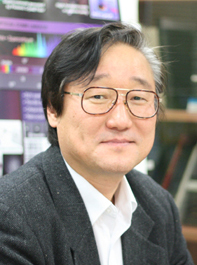 New System to Generate Extreme-Ultraviolet Light Developed
A KAIST research team led by Prof. Seung-Woo Kim of the Mechanical Engineering Department developed a new system for generating coherent extreme-ultraviolet (EUV) light, school authorities announced on June 5.
The new system comes in a metallic nano-structure consisting of a two-dimensional array of gold "bow tie" elements on a sapphire plate. The new process was featured in the British journal Nature on June 5.
The properties of coherent EUV light make it a prime candidate for exciting technological applications. But, at present, the equipment needed to generate the short-wavelength light is costly and bulky. The system developed by Prof. Kim"s research team is expected to reduce both cost and bulk.
The new system uses the conventional principle of high-harmonic generation via the interaction of a femtosecond laser pulse with a gas, but adopts the novel concept of amplifying light by way of local plasmon field enhancement, according to the research team.
2008.06.10 View 15460
New System to Generate Extreme-Ultraviolet Light Developed
A KAIST research team led by Prof. Seung-Woo Kim of the Mechanical Engineering Department developed a new system for generating coherent extreme-ultraviolet (EUV) light, school authorities announced on June 5.
The new system comes in a metallic nano-structure consisting of a two-dimensional array of gold "bow tie" elements on a sapphire plate. The new process was featured in the British journal Nature on June 5.
The properties of coherent EUV light make it a prime candidate for exciting technological applications. But, at present, the equipment needed to generate the short-wavelength light is costly and bulky. The system developed by Prof. Kim"s research team is expected to reduce both cost and bulk.
The new system uses the conventional principle of high-harmonic generation via the interaction of a femtosecond laser pulse with a gas, but adopts the novel concept of amplifying light by way of local plasmon field enhancement, according to the research team.
2008.06.10 View 15460 -
 Actress Han Makes Donation to KAIST
Actress and movie star Han Eunjung donated 100 million won ($98,000) to KAIST to help Korea"s prestigious research-oriented university continue its academic development on Wednesday (June 4).
In a donation ceremony held at the KAIST President"s office, she signed an agreement for donation.
Han said that she came to realize the importance of science and technology while filming a new movie based on a 15th century Joseon Dynasty episode featuring the development of a rocket-like firearm called "Singijeon." The blockbuster movie will be released in early August.
She also said that she was impressed by the first Korean astronaut So-Yeon Lee who took her undergraduate, master"s and doctorate degrees at KAIST, and decided to make a contribution to the school.
"I hope that I would be of any help in the development of KAIST in becoming one of the top research universities in the world," she said.
Han has been cast for the MBC drama "Lawyers of Korea" which will be aired starting from July.
2008.06.05 View 12821
Actress Han Makes Donation to KAIST
Actress and movie star Han Eunjung donated 100 million won ($98,000) to KAIST to help Korea"s prestigious research-oriented university continue its academic development on Wednesday (June 4).
In a donation ceremony held at the KAIST President"s office, she signed an agreement for donation.
Han said that she came to realize the importance of science and technology while filming a new movie based on a 15th century Joseon Dynasty episode featuring the development of a rocket-like firearm called "Singijeon." The blockbuster movie will be released in early August.
She also said that she was impressed by the first Korean astronaut So-Yeon Lee who took her undergraduate, master"s and doctorate degrees at KAIST, and decided to make a contribution to the school.
"I hope that I would be of any help in the development of KAIST in becoming one of the top research universities in the world," she said.
Han has been cast for the MBC drama "Lawyers of Korea" which will be aired starting from July.
2008.06.05 View 12821 -
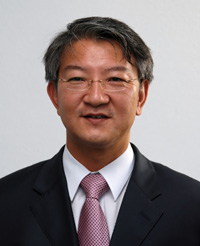 KAIST, GS Caltex Jointly Develop New Bacteria to Produce Biobutanol
KAIST and GS Caltex, Korea"s second-largest refiner, have jointly developed a new strain of bacteria to produce biobutanol, which is regarded as a promising next-generation biofuel, KAIST authorities said on Monday (June 2).
A research team led by Prof. Sang-Yup Lee of the Chemical and Biomolecular Engineering Department and researchers of GS Caltex succeeded in developing an improved strain of bacteria which enables to produce a large amount of biobutanol in the process of fermenting biomass. The research team has applied for international patent for the new technology.
Biomass refers to living and recently dead biological material that can be used as fuel or for industrial production. It usually refers to plant matter grown for use as biofuel, but it also includes plant or animal matter used for production of fibers, chemicals or heat.
In the 1970s and 1980s when scientists began researching the possibilities of alternative fuels, bacteria were used in the process of fermenting biomass. This ABE (acetone, butanol, ethanol) fermentation process yields butanol, acetone, and ethanol in a ratio of 6:3:1, respectively. Acetone produced in this process is not usable.
The newly developed technology to produce biobutanol has an advantage of lowering production cost by eliminating the process to separate acetone from butanol. This has been made possible by improving the bacteria used for the fermentation in metabolic engineering terms, and producing butanol and ethanol only in a ratio of 6:1, while curbing the generation of acetone.
In comparison with bioethanol, also a biofuel mixture which is currently under widespread use in some countries, butanol is more easily transported with gasoline and diesel through pipelines because of its lower tendency to separate from the fuel when contaminated with water. Butanol is also less corrosive than ethanol, another reason its transport through pipeline is preferable.
Global interest in full utilization of biomass and development of other alternative energy including biobutanol has deepened in recent years, as crude oil prices have skyrocketed to record levels and climate changes resulting from the excessive use of fossil fuel have been causing various problems around the world.
2008.06.04 View 14394
KAIST, GS Caltex Jointly Develop New Bacteria to Produce Biobutanol
KAIST and GS Caltex, Korea"s second-largest refiner, have jointly developed a new strain of bacteria to produce biobutanol, which is regarded as a promising next-generation biofuel, KAIST authorities said on Monday (June 2).
A research team led by Prof. Sang-Yup Lee of the Chemical and Biomolecular Engineering Department and researchers of GS Caltex succeeded in developing an improved strain of bacteria which enables to produce a large amount of biobutanol in the process of fermenting biomass. The research team has applied for international patent for the new technology.
Biomass refers to living and recently dead biological material that can be used as fuel or for industrial production. It usually refers to plant matter grown for use as biofuel, but it also includes plant or animal matter used for production of fibers, chemicals or heat.
In the 1970s and 1980s when scientists began researching the possibilities of alternative fuels, bacteria were used in the process of fermenting biomass. This ABE (acetone, butanol, ethanol) fermentation process yields butanol, acetone, and ethanol in a ratio of 6:3:1, respectively. Acetone produced in this process is not usable.
The newly developed technology to produce biobutanol has an advantage of lowering production cost by eliminating the process to separate acetone from butanol. This has been made possible by improving the bacteria used for the fermentation in metabolic engineering terms, and producing butanol and ethanol only in a ratio of 6:1, while curbing the generation of acetone.
In comparison with bioethanol, also a biofuel mixture which is currently under widespread use in some countries, butanol is more easily transported with gasoline and diesel through pipelines because of its lower tendency to separate from the fuel when contaminated with water. Butanol is also less corrosive than ethanol, another reason its transport through pipeline is preferable.
Global interest in full utilization of biomass and development of other alternative energy including biobutanol has deepened in recent years, as crude oil prices have skyrocketed to record levels and climate changes resulting from the excessive use of fossil fuel have been causing various problems around the world.
2008.06.04 View 14394 -
 KAIST, ICU Agree to Merge
KAIST and the Information and Communications University, a state-run institution, decided to merge as they signed a memorandum of understanding for unification at the Westin Chosun Hotel in Seoul on May 23.
The MOU signing ceremony was attended by representatives of the two universities and related high-ranking government officials from the Ministry of Knowledge Economy and the Ministry of Education, Science and Technology.
Under the agreement, the two universities will form a joint committee to complete the merger process by the end of this year. According to the MOU, ICU will become the "IT Convergence Campus" (ICC) which will include KAIST"s IT related departments and research institutes. The projected ICC will be headed by a KAIST vice president, KAIST authorities said.
With the merger, the number of KAIST students in the IT area will increase to 2,850 from 1,951, while the number of IT-related faculty members will rise to 157 from 99.
ICU was established in 1997 by the Korean Ministry of Information and Communication, the Electronics and Telecommunications Research Institute, and some major Korean IT companies. Located in Daedeok Science Town in Daejeon where KAIST is also situated, ICU started as a graduate school and added the undergraduate course in 2002. It currently has a total enrollment of 1,121 students -- 481undergraduate students, 324 graduate students and 316 doctorate students.
KAIST said that it will treat ICU professors and staff equally after the merger. This year, the two universities will separately conduct freshmen recruitment procedures for 2009, but will then unify recruitment.
The unification of the two institutions is expected to give KAIST the competitive edge through a larger faculty, student body, and expanded facilities.
The agreement put an end to extended negotiations for merger which started in July 2006. The talk of merging the two universities surfaced when the Board of Audit and Inspection concluded that the government"s direct financial support for ICU was unlawful as ICU was established as a private school. When ICU was established in 1997, the Ministry of Information and Communication provided 200 billion won as the basic endowment and has continually provided 10 billion won in operating funds each year.
2008.05.22 View 16319
KAIST, ICU Agree to Merge
KAIST and the Information and Communications University, a state-run institution, decided to merge as they signed a memorandum of understanding for unification at the Westin Chosun Hotel in Seoul on May 23.
The MOU signing ceremony was attended by representatives of the two universities and related high-ranking government officials from the Ministry of Knowledge Economy and the Ministry of Education, Science and Technology.
Under the agreement, the two universities will form a joint committee to complete the merger process by the end of this year. According to the MOU, ICU will become the "IT Convergence Campus" (ICC) which will include KAIST"s IT related departments and research institutes. The projected ICC will be headed by a KAIST vice president, KAIST authorities said.
With the merger, the number of KAIST students in the IT area will increase to 2,850 from 1,951, while the number of IT-related faculty members will rise to 157 from 99.
ICU was established in 1997 by the Korean Ministry of Information and Communication, the Electronics and Telecommunications Research Institute, and some major Korean IT companies. Located in Daedeok Science Town in Daejeon where KAIST is also situated, ICU started as a graduate school and added the undergraduate course in 2002. It currently has a total enrollment of 1,121 students -- 481undergraduate students, 324 graduate students and 316 doctorate students.
KAIST said that it will treat ICU professors and staff equally after the merger. This year, the two universities will separately conduct freshmen recruitment procedures for 2009, but will then unify recruitment.
The unification of the two institutions is expected to give KAIST the competitive edge through a larger faculty, student body, and expanded facilities.
The agreement put an end to extended negotiations for merger which started in July 2006. The talk of merging the two universities surfaced when the Board of Audit and Inspection concluded that the government"s direct financial support for ICU was unlawful as ICU was established as a private school. When ICU was established in 1997, the Ministry of Information and Communication provided 200 billion won as the basic endowment and has continually provided 10 billion won in operating funds each year.
2008.05.22 View 16319 -
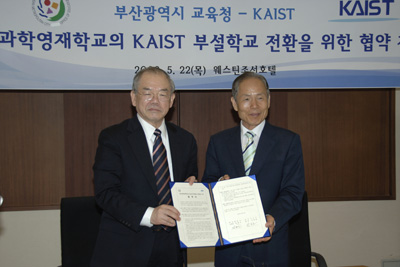 Korea Science Academy to Be Affiliated with KAIST
The Korea Science Academy, a state-run science high school located in the southeastern port city of Busan, will be converted to an affiliated school of KAIST as of March 1, 2009, university authorities said on Thursday (May 22).
The memorandum of understanding for the switchover was signed by KAIST President Nam-Pyo Suh, Dong-Geun Seol, superintendent of the Busan Metropolitan City and Jang-Hyuk Kwon, principal of the Korea Science Academy, at Seoul"s Westin Chosun Hotel Thursday morning.
When the switchover comes into effect, the principal of the high school will be appointed by the president of KAIST. Administrative details will be decided by a working-level committee consisting of delegates from the KAIST, the Office of Education of the Busan Metropolitan City and the Korea Science Academy.
The Korea Science Academy was established in 1991 to provide strengthened science courses for gifted students to prepare them for careers in science and technology. The school currently has an enrollment of 428 students and 45 classroom teachers.
2008.05.22 View 14892
Korea Science Academy to Be Affiliated with KAIST
The Korea Science Academy, a state-run science high school located in the southeastern port city of Busan, will be converted to an affiliated school of KAIST as of March 1, 2009, university authorities said on Thursday (May 22).
The memorandum of understanding for the switchover was signed by KAIST President Nam-Pyo Suh, Dong-Geun Seol, superintendent of the Busan Metropolitan City and Jang-Hyuk Kwon, principal of the Korea Science Academy, at Seoul"s Westin Chosun Hotel Thursday morning.
When the switchover comes into effect, the principal of the high school will be appointed by the president of KAIST. Administrative details will be decided by a working-level committee consisting of delegates from the KAIST, the Office of Education of the Busan Metropolitan City and the Korea Science Academy.
The Korea Science Academy was established in 1991 to provide strengthened science courses for gifted students to prepare them for careers in science and technology. The school currently has an enrollment of 428 students and 45 classroom teachers.
2008.05.22 View 14892 -
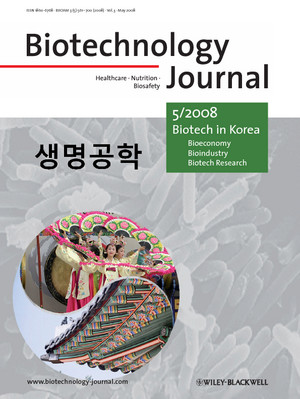 International Science Journal Spotlights Korean Biotechnology
Biotechnology Journal published by German-based Wiley-VCH, one of the world"s major scientific and technical publishers, devoted its entire special edition for May to biotechnology in Korea.
The monthly journal"s special issue was planned by KAIST Professor Sang-Yup Lee of the Chemical and Biomolecular Engineering Department who is one of the journal"s two editors-in-chief.
The special issue outlines the current status and future prospect of biotechnology in Korea, and presents five review papers and eight original papers by leading Korean biotech researchers to showcase recent developments in Korean biotechnology. Among these papers, a review by Dr. Byung-Hwan Hyeon and his colleagues describes in detail the Korean biotechnology strategies represented by "Bio-Vision 2016," and another by Dr. Ji-Hyun Kim and his collaborators presents recent progress in microbial genome projects in Korea.
In the editorial of the journal, Prof. Lee said, "Heavy industry and IT industry have been the two drivers of Korean economic growth. Korea is now considering biotechnology as its next generation growth engine."
Underscoring the growing importance of fusion research, he mentioned that integration of biotechnology with information technology and nanotechnology is advancing rapidly in Korea. Another special edition of Biotechnology Journal focusing on these exciting biotech developments in Korea is planned for the future.
2008.05.20 View 16477
International Science Journal Spotlights Korean Biotechnology
Biotechnology Journal published by German-based Wiley-VCH, one of the world"s major scientific and technical publishers, devoted its entire special edition for May to biotechnology in Korea.
The monthly journal"s special issue was planned by KAIST Professor Sang-Yup Lee of the Chemical and Biomolecular Engineering Department who is one of the journal"s two editors-in-chief.
The special issue outlines the current status and future prospect of biotechnology in Korea, and presents five review papers and eight original papers by leading Korean biotech researchers to showcase recent developments in Korean biotechnology. Among these papers, a review by Dr. Byung-Hwan Hyeon and his colleagues describes in detail the Korean biotechnology strategies represented by "Bio-Vision 2016," and another by Dr. Ji-Hyun Kim and his collaborators presents recent progress in microbial genome projects in Korea.
In the editorial of the journal, Prof. Lee said, "Heavy industry and IT industry have been the two drivers of Korean economic growth. Korea is now considering biotechnology as its next generation growth engine."
Underscoring the growing importance of fusion research, he mentioned that integration of biotechnology with information technology and nanotechnology is advancing rapidly in Korea. Another special edition of Biotechnology Journal focusing on these exciting biotech developments in Korea is planned for the future.
2008.05.20 View 16477 -
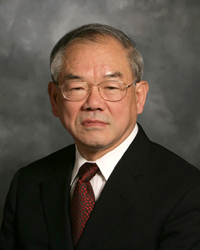 President Suh to Receive Honorary Doctorate from Carnegie Mellon University
Carnegie Mellon University of the United States has decided to present an honorary doctorate degree to KAIST President Nam-Pyo Suh, school authorities said on April 30.
President Suh will receive the honorary degree during the university"s 111th commencement ceremony at its Pittsburgh campus on May 18. Suh earned his Ph.D. in mechanical engineering at Carnegie Mellon in 1964.
Carnegie Mellon University said in a press release that Suh is honored for transforming KAIST into a world-class institution since he became president of KAIST in 2006.
"His distinguished academic career has also included posts at the University of South Carolina and the Massachusetts Institute of Technology, as well as an assistant directorship for the National Science Foundation of the United States. Beyond his academic leadership, Suh invented an industrial process for production of plastic parts that is used in factories worldwide. He holds more than 50 patents and helped start several companies," the press release said.
Five other prominent Americans will also receive honorary doctorate degrees from Carnegie Mellon along with President Suh. They are Al Gore, former U.S. vice president; Norman R. Augustine, former president and CEO of Martin-Marietta and Lockheed Martin and chairman of the American Red Cross; Jeff Bezos, founder of Amazon.com, the world"s largest online retailer; Elizabeth Catlett, an artist and sculptor famed for her dedication to the rights of minorities and women; and Patrick Colonel Suppes, a professor emeritus at Stanford University.
Carnegie Mellon, a leading research university of the United States is known for its distinctive mix of programs in engineering, computer science, robotics, business, public policy, fine arts and the humanities.
2008.04.30 View 14830
President Suh to Receive Honorary Doctorate from Carnegie Mellon University
Carnegie Mellon University of the United States has decided to present an honorary doctorate degree to KAIST President Nam-Pyo Suh, school authorities said on April 30.
President Suh will receive the honorary degree during the university"s 111th commencement ceremony at its Pittsburgh campus on May 18. Suh earned his Ph.D. in mechanical engineering at Carnegie Mellon in 1964.
Carnegie Mellon University said in a press release that Suh is honored for transforming KAIST into a world-class institution since he became president of KAIST in 2006.
"His distinguished academic career has also included posts at the University of South Carolina and the Massachusetts Institute of Technology, as well as an assistant directorship for the National Science Foundation of the United States. Beyond his academic leadership, Suh invented an industrial process for production of plastic parts that is used in factories worldwide. He holds more than 50 patents and helped start several companies," the press release said.
Five other prominent Americans will also receive honorary doctorate degrees from Carnegie Mellon along with President Suh. They are Al Gore, former U.S. vice president; Norman R. Augustine, former president and CEO of Martin-Marietta and Lockheed Martin and chairman of the American Red Cross; Jeff Bezos, founder of Amazon.com, the world"s largest online retailer; Elizabeth Catlett, an artist and sculptor famed for her dedication to the rights of minorities and women; and Patrick Colonel Suppes, a professor emeritus at Stanford University.
Carnegie Mellon, a leading research university of the United States is known for its distinctive mix of programs in engineering, computer science, robotics, business, public policy, fine arts and the humanities.
2008.04.30 View 14830 -
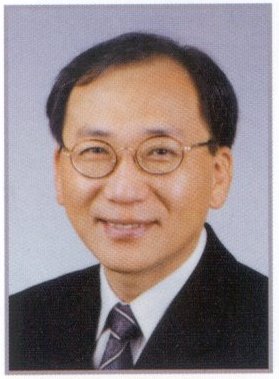 World Micromachine Summit to Open in Daejeon
The 2008 World Micromachine Summit will be held at Hotel Riviera in Daejeon for a four-day run from April 30, drawing worldwide industrial and academic leaders in the micro-nano-technology (MNT).
Organizers say that 76 delegates and 56 observers from 19 countries and regions will take part in this year"s Micromachine Summit. Prof. Cho Young-ho of the Department of Bio & Brain Engineering of KAIST will play host to the annual event.
Participants will discuss the progress of micro-nano-technology in each country and region development of national policies in this area. The Summit was first organized in 1995 by the Micromachine Center of Japan with representatives from 10 countries participating. They were Australia, Canada, Germany, Italy, Japan, the Netherlands, Switzerland, the United Kingdom, and the United States.
Korea was first invited to the conference in 1999. Since then, Korea has played an active role in promoting technological exchanges among nations and has conducted presentations and discussions on major technological breakthroughs.
During the four-day run, each delegation will outline their country"s policies and strategies and present local features on focused areas including this year"s main theme, "Micromachine towards Technology Convergence Era."
The gathering will offer a valuable opportunity for the participants to exchange and collect information on the current state of the MNT, as well as providing a forum for worldwide networking of leaders in the area.
2008.04.29 View 15403
World Micromachine Summit to Open in Daejeon
The 2008 World Micromachine Summit will be held at Hotel Riviera in Daejeon for a four-day run from April 30, drawing worldwide industrial and academic leaders in the micro-nano-technology (MNT).
Organizers say that 76 delegates and 56 observers from 19 countries and regions will take part in this year"s Micromachine Summit. Prof. Cho Young-ho of the Department of Bio & Brain Engineering of KAIST will play host to the annual event.
Participants will discuss the progress of micro-nano-technology in each country and region development of national policies in this area. The Summit was first organized in 1995 by the Micromachine Center of Japan with representatives from 10 countries participating. They were Australia, Canada, Germany, Italy, Japan, the Netherlands, Switzerland, the United Kingdom, and the United States.
Korea was first invited to the conference in 1999. Since then, Korea has played an active role in promoting technological exchanges among nations and has conducted presentations and discussions on major technological breakthroughs.
During the four-day run, each delegation will outline their country"s policies and strategies and present local features on focused areas including this year"s main theme, "Micromachine towards Technology Convergence Era."
The gathering will offer a valuable opportunity for the participants to exchange and collect information on the current state of the MNT, as well as providing a forum for worldwide networking of leaders in the area.
2008.04.29 View 15403 -
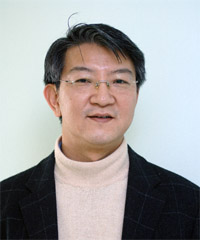 Prof. Sang-Yup Lee Co-Editor-in-Chief of Biotechnology Journal
Prof. Sang-Yup Lee of KAIST"s Department of Chemical and Biomolecular Engineering has been appointed as co-editor-in-chief of Biotechnology Journal published by Wiley-VCH, a German-based leading technical publisher, university authorities said Tuesday, April 15.
Launched in January 2006, Biotechnology Journal has covered biological process, brain ailments, biological medicine, protein design and other applied bio-sciences.
Starting in May, Lee will be responsible for setting and overseeing editorial direction of the journal along with Prof. Alois Jungbauer of Austria.
Professor Lee has been gaining recognition in and outside the country for his research on metabolic engineering. In 2002, he was chosen as one of Asia"s next generation leaders by the World Economic Forum. In 2007, Lee was elected a fellow of the American Association for the Advancement of Science, the world"s largest general scientific society. He is also serving as an editorial member of more than ten international journals including Biotechnology & Bioengineering.
Awards and honors include the First Young Scientist"s Award from the President of Korea, the Scientist of the Month Award from the Korean Ministry of Science and Technology, the Best Patent Award from Korean Intellectual Property Office, the Citation Classic Award from ISI, USA, and the First Elmer Gaden Award (1999 Best Paper Award) from Biotechnology and Bioengineering (John Wiley & Sons, USA) at the ACS National meeting.
2008.04.16 View 15661
Prof. Sang-Yup Lee Co-Editor-in-Chief of Biotechnology Journal
Prof. Sang-Yup Lee of KAIST"s Department of Chemical and Biomolecular Engineering has been appointed as co-editor-in-chief of Biotechnology Journal published by Wiley-VCH, a German-based leading technical publisher, university authorities said Tuesday, April 15.
Launched in January 2006, Biotechnology Journal has covered biological process, brain ailments, biological medicine, protein design and other applied bio-sciences.
Starting in May, Lee will be responsible for setting and overseeing editorial direction of the journal along with Prof. Alois Jungbauer of Austria.
Professor Lee has been gaining recognition in and outside the country for his research on metabolic engineering. In 2002, he was chosen as one of Asia"s next generation leaders by the World Economic Forum. In 2007, Lee was elected a fellow of the American Association for the Advancement of Science, the world"s largest general scientific society. He is also serving as an editorial member of more than ten international journals including Biotechnology & Bioengineering.
Awards and honors include the First Young Scientist"s Award from the President of Korea, the Scientist of the Month Award from the Korean Ministry of Science and Technology, the Best Patent Award from Korean Intellectual Property Office, the Citation Classic Award from ISI, USA, and the First Elmer Gaden Award (1999 Best Paper Award) from Biotechnology and Bioengineering (John Wiley & Sons, USA) at the ACS National meeting.
2008.04.16 View 15661